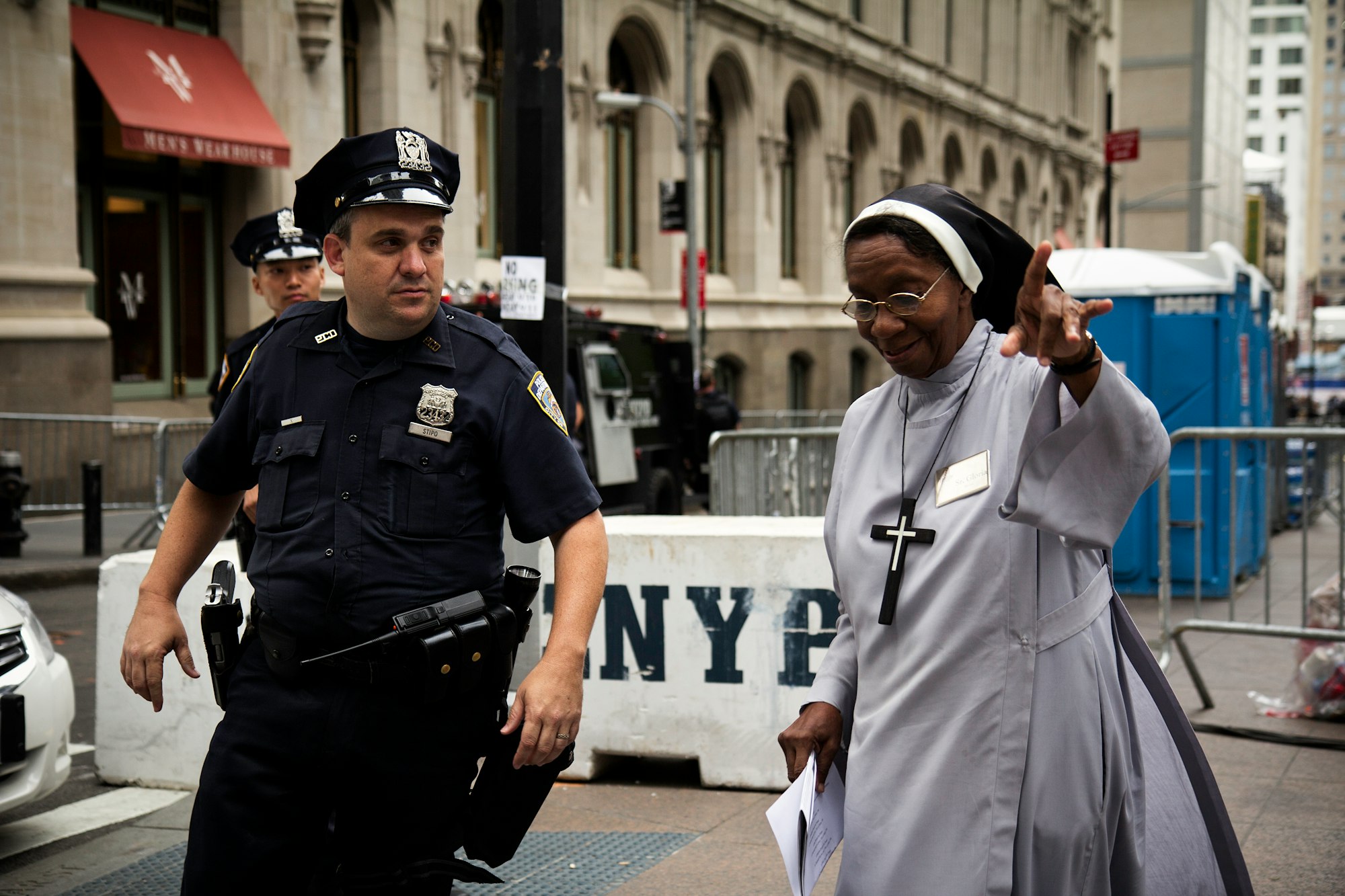The law gives police officers an inordinate amount of control and discretion during involuntary encounters like traffic stops. In most instances, police can pull a driver over for any violation, no matter how small or insignificant to public order or traffic safety. From the moment the stop begins, the officer can initiate steps to what amounts to a roadside interrogation and investigation, resulting in a search of the car and its occupants, handcuffing them, or placing them under arrest. Most traffic stops do not reach these three escalated outcomes, as warnings and tickets for speeding or other violations are the norm. However, data show that when such escalations occur, they most often target Black drivers.
New research published by the National Academy of Sciences shows how the language an officer uses when initiating a traffic stop with a Black driver is a reliable indicator of whether that stop will result in a search, arrest, or other escalation. (The dataset was limited to Black drivers in the "medium-sized racially diverse U.S. city" because “97.8 percent of the drivers who experienced one of the three escalated outcomes were Black.”) The research shows that the first 45 words from the police officer–occurring within the first 27 seconds of a traffic stop–set the tone and more often than not predicted whether the stop would escalate to something beyond a ticket or warning. In the words of the authors, “the initial words an officer speaks during a car stop can presage an escalated outcome suggests that…stops that ended in escalation often began in escalation.”
In the long wake of the police killings of Daunte Wright, Philando Castile, and George Floyd after motor vehicle stops, these research findings place much of the onus for reducing escalation on police officers. Of course, there will be times when officers must arrest suspects or otherwise use force against members of the public. But, as I’ve written and stressed repeatedly, police departments and their officers should prioritize reducing antagonistic contacts with the public so that arrests and violence happen less frequently. The good news is that the NAS study strongly suggests better officer training could greatly reduce unnecessary escalations in police-public interactions.
Two chief indicators of escalation were officers not informing a driver of the reason for the stop and issuing orders rather than eliciting compliance through requests and cooperation. Put another way, the officer began these stops in an antagonistic posture.
The authors concede that their collection method cannot differentiate between routine stops for traffic violations and investigatory stops using traffic violations as a pretext. The difference between the two is that in the case of an investigatory stop, the driver may be more akin to a suspect than just someone driving too fast. Yet, most of the searches covered in the study–81.6 percent–found no contraband, suggesting a lack of probable cause and thus no good reason for assuming an antagonistic posture from the outset of the stop.
There is a growing body of research that suggests training officers in specific ways to inform and show respect to individuals reduces resentment from their interaction, even when the officer has to make an arrest or impose a negative sanction like a ticket. One study from 2022 goes so far as to hope that such training could be used “not simply to encourage fair and respectful policing but also to improve evaluations of the police and crime prevention effectiveness.” The term for this approach is “procedural justice” or “PJ,” but it’s not much more than service-oriented policing.
The idea of service is already baked-into policing. “To protect and to serve” is the famous motto on the side of police cruisers all across the country. In my adopted hometown of Washington, D.C., every marked car prominently features the phrase “We are here to help.” Although most people refer to “911 calls,” many police departments dub them “calls for service.” In other words, procedural justice training is really about putting the service at the forefront of how officers conduct themselves in their PSAs–patrol service areas.
Procedural justice is not simply about police being nicer to make people feel better, it’s about improving mutual respect to make police more effective. The findings of the 2022 study that combined procedural justice with “hot spots” policing–small areas where crime is significantly higher–were impressive:
We conducted pre and post household surveys to assess resident attitudes toward the police. Impacts on crime were measured using crime incident and citizen-initiated crime call data. The training led to increased knowledge about PJ and more procedurally just behavior in the field as compared with the [control group]. At the same time, PJ officers made many fewer arrests than [control group] officers. Residents of the PJ hot spots were significantly less likely to perceive police as harassing or using unnecessary force, though we did not find significant differences between the PJ and [control group] hot spots in perceptions of PJ and police legitimacy. We found a significant relative 14 percent decline in crime incidents in the PJ hot spots during the experiment. (emphasis added)
In this very real sense, procedural justice is a crime-reduction strategy. As such, police departments should embrace PJ, along with other evidence-based policing strategies, and incorporate them into both academy training and ongoing training for officers. There may be some resistance to the "procedural justice" per se–I’ve written before that I usually avoid the term “systemic racism” when talking to cops, even when I’m discussing how to combat it–but the term is much less important than the underlying lessons of communication and mutual respect intrinsic to the training.
It is increasingly clear that police departments that put service first, whatever name they want to put on it, will see benefits in their communities and make their officers’ jobs easier.

